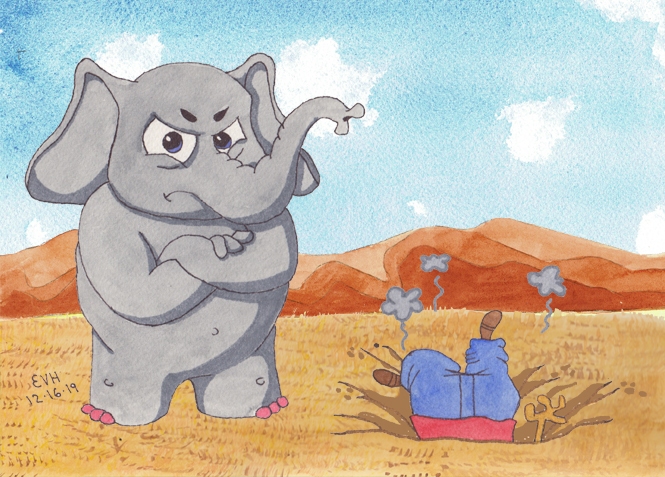
Jataka 197
Mittāmitta Jātaka
True Friend
as told by Eric Van Horn
originally translated by William Henry Denham Rouse, Cambridge University
originally edited by Professor Edward Byles Cowell, Cambridge University
The story in the present may seem a little harsh. A student takes a piece of cloth without asking his teacher’s permission, whereupon his teacher strikes him and ridicules him. This harsh treatment may be because of the karmic residue from the Jātaka itself, where in a previous life the student also disobeyed his teacher, and this leads to his demise!
“He smiles not.” The Master told this story while he was at Sāvatthi (the capital city of Kosala). It is about a certain monk.
This monk took a piece of cloth that had been discarded by his teacher. He was confident that if he took it his teacher would not be angry. Then he made a shoe-bag of it and took his leave. When this teacher asked why he took it, he replied he had felt confident that if he took the cloth that his teacher would not be angry. The teacher flew into a rage. He stood up and struck him. “What trust is there between you and me?” he asked.
This incident became known among everyone in the Saṇgha. One day the monks were discussing it in the Dharma Hall. One said, “Friend, this young monk was so confident of his teacher’s friendship that he took a piece of cloth and made it into a shoe-bag. Then the teacher asked him what trust there could be between them. He flew into a rage, jumped up, and struck him.”
The Master came in and asked them what they were discussing. They told him. Then he said, “This is not the first time, monks, that this man has disappointed the trust of his fellow. He did the same before.” And then he told this story of the past.
Once upon a time, when Brahmadatta was the King of Benares, the Bodhisatta was born as a brahmin’s son in the realm of Kāsi (one of the countries in India). When he came of age, he renounced the world. He developed the supernormal powers (1. Replicate and project bodily-images of oneself, 2. Make oneself invisible, 3. Pass through solid objects, 4. Sink into solid ground, 5. Walk on water, 6. Fly, 7. Touch the sun and moon with one's hand, 8. Ascend to the world of the god Brahmā in the highest heavens) and the Attainments (jhānas). He lived in the region of the Himalaya with a band of disciples.
One of this band disobeyed the Bodhisatta. Against the Bodhisatta’s instructions he kept a young elephant which had lost its mother. This creature grew to be very large, then he killed his master and made off into the forest. The recluses performed his funeral rites, and then they went to the Bodhisatta and asked this question:
“Sir, how may we know whether someone is a friend or an enemy?”
The Bodhisatta responded to them in the following stanzas:
“He smiles not when he sees him, no welcome will he show,
He will not turn his eyes that way, and answers him with ‘No.’
“These are the marks and tokens by which your foe you see.
These if a wise man sees and hears he knows his enemy.”

Figure: Figure: “He smiles not!”
In these words the Bodhisatta declared the marks of friend and foe. Thereafter he cultivated the Excellences (the brahma-vihāras) and was reborn in the Brahma realm.
When the Master ended this discourse, he identified the birth: “The monk in question was he who kept the pet elephant. His teacher was the elephant, the Buddha’s followers were the band of recluses, and I was their leader.”
